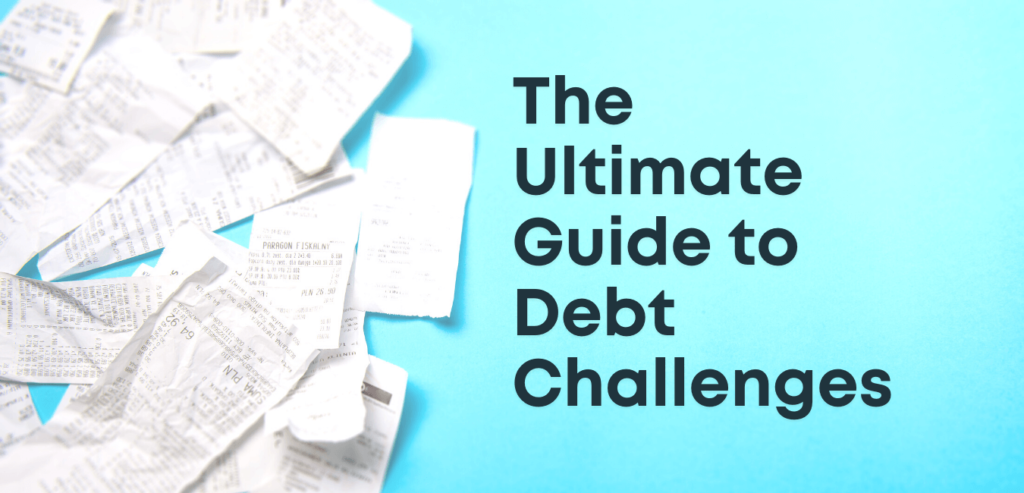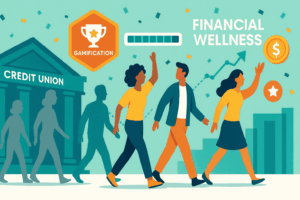Debt Challenges make getting out of debt more fun and increase the likelihood you will achieve your debt elimination goal. There are many ways to gamify debt payoff and different types of debt challenges you can participate in. This ultimate debt challenges guide will teach you all about the power of debt challenges, determine which challenge is right for you, and how to get started.
If you are interested in learning more about financial gamification check out Ostrich’s ultimate financial gamification guide.
Why Use Debt Challenges?
Getting out of debt can be stressful and frustrating. With high-interest rate debt, it may feel like you can never quite get ahead. Debt challenges provide a pathway and make paying off debt simpler and more fun.
Because debt challenges use gamification to keep you on track, reward you as you make progress, and hold you accountable, you increase your likelihood of getting out of debt for good.
What else is great about debt challenges is that there are many different types that can help you manage high-interest rate debt like credit cards to long-term debt obligations like student loans and mortgages. Whatever your goals are debt challenges are a great tool in your financial tool belt.
What are Debt Challenges?
Debt challenges are game-like challenges that last a set period of time, have a regular check-in, and have a specified goal. Debt challenges can be done by individuals, couples, or even groups of people. Research from the American Society of Training has shown that combining a regular progress check-in with an accountability partner increases your likelihood of achieving a goal by 95%. Ostrich’s debt challenges make it easy to find and invite others with similar debt elimination goals to be your accountability partner in debt challenges.
Types of Debt Challenges
There are many types of debt so selecting the best type of debt challenge for you is crucial. The type of debt, your relationship to money, and how much money you have to put towards debt payoff all factor into what type of challenge is right for you. To best determine the route to take, download the Ostrich mobile app which will suggest the best debt challenges that are aligned with your goals.
The key characteristics to pay attention to when identifying the right debt challenge for you are the length of the challenge, the frequency of the check-in, and the goal.
Length of the challenge
How long will the debt challenge last? It’s important to set an end date. Even if you intend to continue using debt challenges into the future, the end date helps you stick to the goal in the short term. At the end of the debt challenge, you can always start on a new piece of debt or update your debt elimination goal.
Common challenge lengths include:
- 1 year debt challenges; examples include Avalanche and Snowball.
- 6 month debt challenges; an example is Clear Your Cards.
- 3 month debt challenges; an example is Minnie Me and Double or Nothing.
Frequency of the check-ins
The second factor to consider is how frequently you wish to check in for your debt challenge. It’s important to keep your goals top of mind, but you also have to be realistic in your ability to payoff debt combined with the other priorities in your life. For example, if you are participating in the Clear Your Cards debt challenge, your credit cards are likely on different payment schedules and the amounts change. You’ll want to check the balances and schedule payments regularly on weekly basis to ensure you have the money to cover the bill.
Whereas a larger debt paydown goal like Snowball you’ll likely make payments on a monthly basis so a less frequent check-in makes more sense.
Common debt challenge check in frequencies are:
- Weekly Savings Challenges, such as Clear Your Cards.
- Monthly Savings Challenges, such as Avalanche, Snowball and Double or Nothing.
Goal setting
The third major part of a debt challenge is the goal. What is that you want to accomplish? It could simply be getting out of debt more quickly, avoiding credit card debt, or eliminating debt for good.
Example goals include:
- Paying off your credit cards.
- Becoming completely debt free.
- Paying off your student loans.
- Building more equity in your home.
- Improving your credit score.
Who Should Use Debt Challenges?
Debt challenges are great for anyone struggling to payoff debt, finds being in debt stressful, has important financial goals, or wants to help others get out of debt. Because debt challenges can be done with others, a group debt challenge is a great way to get your partner, family, and friends who may not like thinking about money to start taking positive financial actions.
Implementing Your Debt Challenge
Debt challenges can be done the old-fashioned way on pen and paper, in group chats, or using Ostrich’s mobile app.
It’s important to pick the right type of debt challenge and ensure you’ve got a way to continually track your progress.
Ostrich’s app has built-in reminders, rewards, and tracking to make it as easy as possible to get started and stick to a debt payoff challenge. Additionally, it’s easy to invite others to join you in group challenges and the app keeps your dollar amounts private to you so you can participate with others.
We recommend using whatever tool works best for you.
Tips for paying down debt more quickly
Here are some debt paydown tips to help you during your debt challenge!
Pay your balances down before the due date
Many loan balances accrue interest on a daily basis. That means that if your payment due date is the 30th of the month, but you pay your bill on the 15th, you’ll actually save yourself 15 days worth of interest. This simple hack can lead to hundreds or even thousands of dollars in savings over the life of your loan.
Dealing with overspending
If you have trouble overspending on credit cards, you can try locking or freezing your card temporarily. Locking or freezing your card through your banking app restricts new purchases, creating a stop-gap in your spending.
If you do need to use a credit card in an emergency, then remove the lock or freeze. The idea is to restrict those impulse purchases that rack up a balance and don’t bring you joy.
Sell your old things for extra cash
You probably have some things you either bought and never used or only lightly used. Whether it’s that new outfit that looked great online but not so much in person or old electronics you don’t use anymore. Hop on Facebook Marketplace, eBay, or Amazon and list those suckers.
Cut out expenses
This is one of the simplest ways to reduce the amount of money flowing out towards new purchases. Find underutilized subscriptions to cancel or things you can live without.
To really maximize expense reduction, try cutting back on larger expenses such as rent or transportation costs if it makes sense. You can join a no spending challenge on Ostrich if you want to join others who are also cutting back on spending.
Benefits of debt paydown challenges
There are many benefits from completing a debt elimination challenge. Who doesn’t want to be debt-free?
Improve your credit
Beyond the good feeling of paying down debt, you may notice your credit score improve. When you reduce your outstanding debt and record regular payments, you’ll be taking actions that factor into your credit score. The beauty of improving your credit score is that in the future if you need to take out another loan on a large purchase you’ll likely receive a lower interest rate, saving you money.
Focus on fun goals
After completing your first debt challenge you’ll be motivated to see what other financial goals you can tackle. You’ll be primed to start saving more and investing in order to get compound interest working in your favor.
Weight off your shoulders
Staying out of debt releases dopamine to your brain, giving you that feel-good high. You’ll legitimately feel accomplished for staying debt-free and you’ll notice feeling less anxious and concerned about money.
Tools to get there quicker
Automation
Set up an automatic payment on your loans. This will ensure that you won’t accidentally forget to make a payment and thus avoid high-interest debt. This is easily one of the best ways to take the burden of remembering off of your shoulders and allow you to focus on other more fun things in your life.
Debt Consolidation
This combines all of your outstanding debts into one payment. If you have 3 credit cards with balances you can consolidate that debt into one payment with a lower interest rate. This is for people who carry a large balance that you are unable to pay off in one payment. Check out the Ostrich App to find the debt consolidation providers we recommend.
Personal Loan
Another tool you could use is similar to consolidation and that’s to get a personal loan with a lower interest rate which you use to pay off your current credit card balances.
Related debt paydown challenges include: Avalanche, Snowball, Clear Your Cards, Double or Nothing, and Minnie Me.
What to do with your newfound habit
Once you’ve paid off your high-interest rate debt you’ll have built a habit of avoiding negative compound interest. You can now turn that newfound habit into other financial goals.
Build your emergency fund
It’s important to have at least a few months’ worth (6 months is considered healthy) of living expenses built up. This provides a cushion for your quality of life in case you lose your income. If you feel like 6 months isn’t enough try building your savings to the level of your annual salary or until you feel comfortable.
Invest for the long-term
Another great use of your new savings is to invest. Research shows that investing for the long-term (10+ years) is the way to go. We recommend getting started with low-cost index funds vs. purchasing individual stocks and using the dollar cost average investing method. Check out our favorite brokerage accounts and our favorite auto investing tools on the Ostrich App.
Take a small calculated bet
Investing for the long-term is proven to be the most sure-fire and safe way to build wealth, but it is boring. Boring is good for your major goals. We like boring!
But if you have a little extra money after making your boring investments and you are okay with losing a small amount of money, explore alternative moonshot investments. This could be anything from investing in cryptocurrency, NFTs, startups, art, collectibles, or that penny stock. The key is not to make this your main strategy. Never invest more than you can afford to lose not just financially, but also psychologically.
Conclusion
Debt challenges make paying off debt and ultimately eliminating debt fun, simple, and keep you accountable to your goals. There are different types of debt challenges that can be customized to meet your current needs. When you participate in debt challenges with others you increase your chance of success and feel good sharing your wins with others. Using Ostrich, you can find the perfect debt challenge for you and even invite your friends to join you. Download Ostrich to get started on your first debt challenge today!














